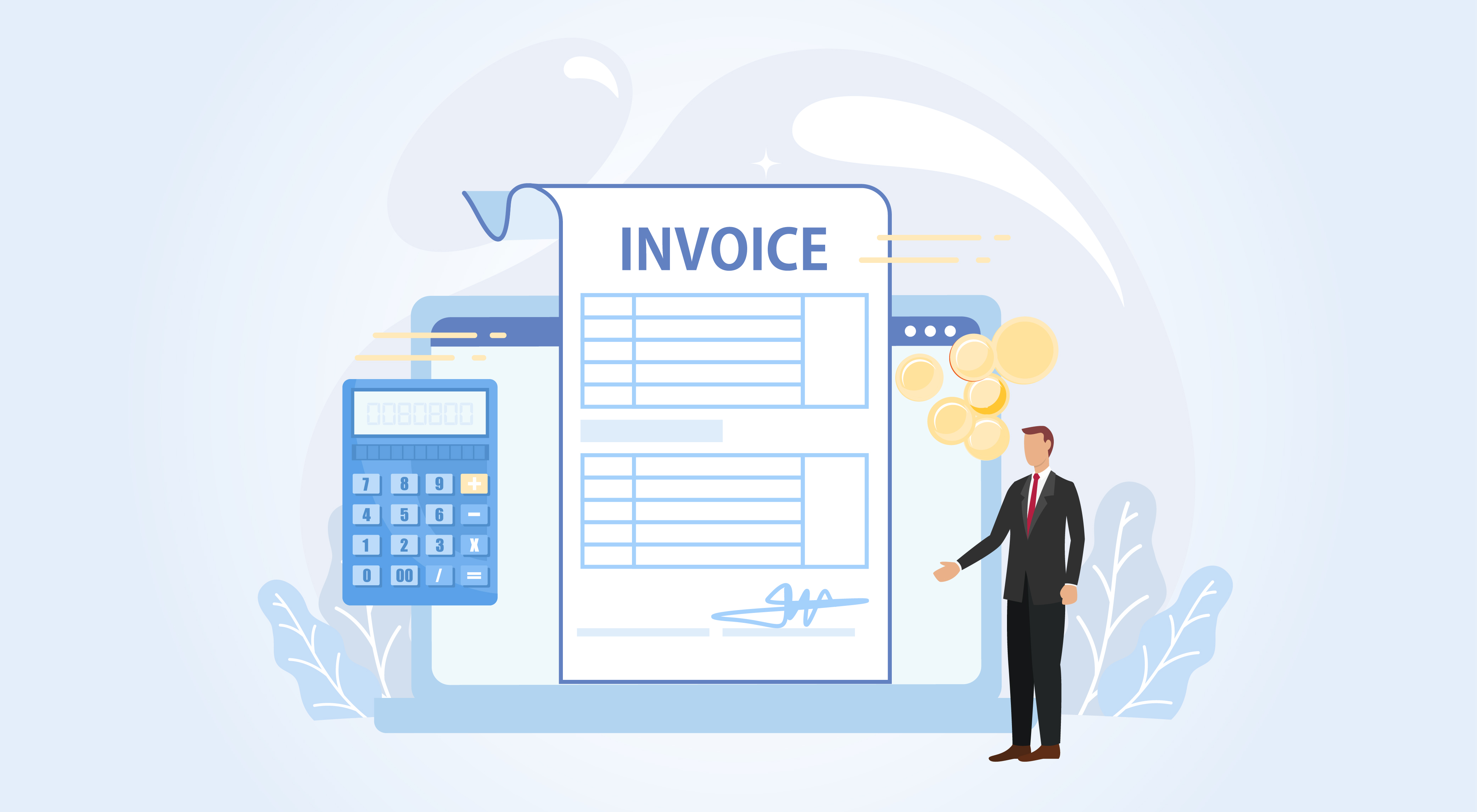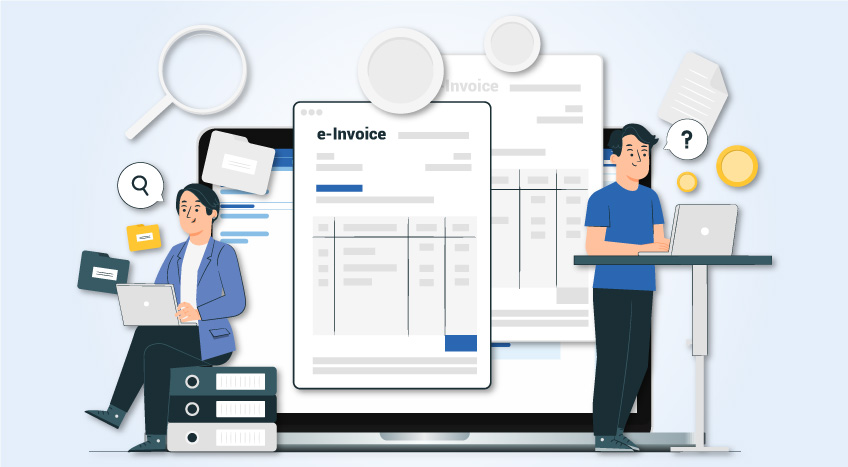The Kingdom of Saudi Arabia’s aim to digitize its economy led to the merger between the Zakat, Tax, and Customs Authority (ZATCA) and the General Authority of Zakat and Tax (GAZT).
The new name of GAZT is ZATCA post merging with ZATCA as the two entities are now referred to as one.
e-Invoicing implementing authority in KSA
The e-invoicing implementing authority in the Kingdom of Saudi Arabia (KSA) is ZATCA. The e-invoicing regulations were issued in December 2020 by the Board of Directors of the Authority. The ZATCA is also responsible for VAT implementation and VAT-related duties including administration. e-invoicing is being implemented by ZATCA because of its many benefits including transparency of transactions, unified processes for higher efficiency, improved compliance, and better customer experience.
What is e-invoicing in KSA?
e-invoicing in KSA is a process of generating and issuing electronic invoices (or e-invoices) instead of paper invoices, credit notes, and debit notes. The procedure involves following a specific format of generating e-invoices, credit notes, and debit notes that the seller will share with the buyer. The e-invoicing regulation must be read along with the VAT Law, the Unified VAT Agreement, VAT Implementing Regulation, and all regulations pertaining to the implementation of the e-invoicing Regulation. An e-invoice is an invoice that is electronically generated with the use of e-invoice software.
There are two types of e-invoices - simplified tax invoices and tax invoices. The tax invoices are those issued by a B2B while the simplified tax invoices are those issued by a B2C. Any paper invoice that has been turned into an electronic format such as through scanning, copying, and so on is not considered an e-invoice. The taxpayers who do not comply with the regulations of ZATCA will face penalties. Sellers must use a compliant e-invoicing software such as a virtual cash register, online cash register, or e-invoicing solution installed on the computer to generate e-invoices with the proper format that has been specified by the ZATCA.
Who has to issue an e-invoice in KSA?
A taxable person is legally required to be registered for VAT or someone who is already registered for VAT as they contribute to economic activity in KSA. Every taxable individual must generate e-invoices in KSA. This includes KSA residents and anyone who is in charge of issuing a tax invoice on behalf of a taxable individual. The people who are exempted from issuing e-invoices include non-residents of KSA.
What are the phases of e-invoicing?
There are two phases of e-invoicing; 1st phase and 2nd phase of e-invoicing.
Phase 1: Generation
The Generation Phase was implemented on 4th December 2021. The taxpayers are required to generate the tax invoices including simplified invoices and CDNs and store them as per the phase requirements specified in the regulations. The e-invoicing issuing process does not differ from the past system of issuing invoices in KSA but the only difference is that it must be done using a compatible system. The e-invoice must include all the mandatory fields as specified in the regulations to ensure all e-invoices generated to follow the same format of including the mandatory fields. In this phase, there is no interaction with the tax authority.
Phase 2: Integration
The second phase is the Integration Phase. It will be rolled out in waves for different taxpayer groups starting from 1st January 2023. Taxpayers will be notified about which wave they are a part of at least 6 months in advance. ZATCA will be the one informing each wave group. This phase deals with the integration of GAZT’s systems with the systems used to generate e-invoices by the various taxpayers. The reason for the integration is to focus on a clearance-based approach whereby there is minimal interaction between the GAZT and taxpayers. Post integration the data and information will be shared with ZATCAs systems.
e-invoicing process for phase 2
The e-invoicing process for the 2nd phase depends on the type of invoice that needs to be generated.
Tax invoice process
The process includes the seller generating the e-invoice as prescribed in the e-invoicing regulations. Next, the seller shares the e-invoice with ZATCA using the e-invoicing solution integrated with ZATCA. Once the e-invoice is cleared by ZATCA, it is sent back to the taxpayer. The seller then shares it with the buyer and stores the generated e-invoice on the particular solution that he is using to generate e-invoices. The buyer can easily scan the QR code on the e-invoice using the VAT app.
Simplified invoice process
The process starts with the seller generating the e-invoice using an e-invoicing solution and making sure it has all the required fields as mandated. The seller then shares the generated e-invoice with the buyer and then stores the e-invoice on the e-invoicing solution. The seller reports the e-invoice to ZATCA within 24 hours of the invoice generation using the e-invoicing portal. The buyer can then scan the QR code using the VAT app.
How to generate e-invoice in 2nd phase in KSA
The first step is to onboard the e-invoicing solution using the e-invoicing portal or the Fatoora portal. After ZATCA notifies the taxpayer of when the integration must be done, the taxpayer must then do the following. He must log in to the Fatoora portal and then onboard by generating an OTP and entering it into the compliant e-invoicing solution. Then the taxpayer can start to generate e-invoices using the e-invoicing software. TallyPrime is a compliant e-invoicing software that businesses can use to generate and issue e-invoices in KSA.
You can generate e-invoices only if you are using TallyPrime Release 2.0 and above which has a valid TSS. You can upgrade to the latest version of TallyPrime or renew the TSS easily on its website. You can check the eligibility to generate e-invoices on TallyPrime by entering your serial number. If you are not eligible then you can easily upgrade the software. TallyPrime makes generating e-invoices easy, enables you to print QR codes, get an e-invoice report, and provides user management for the best security. It also supports the various e-invoice types, supports exceptions, and enables you to export e-invoices as specified by ZATCA.









